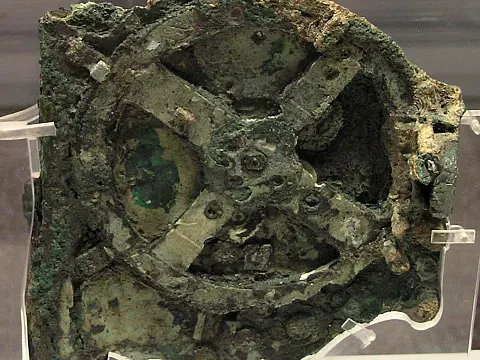Mystery of the Moai Stone Statues of Easter IslandEaster Island is an island in the South Pacific Ocean. It's most famous for its Moai stone statues which line the island's coastline.
Easter Island, also known by its native name of "Rapa Nui", is home to one of the world's most intriguing archaeological wonders - the Moai statues. These massive stone figures, scattered across the island, have captivated the imagination of travellers and researchers alike. Join us on a journey to uncover the history, culture, and significance of these enigmatic stone giants, and delve into the mysteries that surround them. The island was given its common name, Easter Island, by Dutch Admiral Jacob Roggeveen as the island was discovered on Easter Sunday 1722.
The Origins of the Moai Statues
The origins of the Moai statues on Easter Island have long been a subject of fascination and speculation. The Moai statues were carved during a relatively short and intense burst of creative activity in the megalithic period. According to recent research, 887 monolithic stone statues have been inventoried on the island and in museum collections. All of the Moai statues consist of a head and torso, however many of the statues have been buried up to the neck by soil.

The mystery surrounding the Moai is how did a Stone Age society ever make, move and raise them? Some of the Moai statues weigh more than 80 tonnes (twice that of the larger stones at Stonehenge) and have been transported over 15km from the quarry. There are several theories surrounding their creation and purpose. Some believe that the statues were created to honour ancestors or important figures in the community, while others suggest that they served as a form of protection or as markers for sacred sites.
Uncovering the Secrets of the Moai Statues on Easter Island
Over the years, numerous archaeological discoveries and research efforts have provided valuable insights into the history of Easter Island and the enigmatic Moai statues. Through careful excavation and analysis, experts have been able to piece together the story behind these ancient stone giants. From uncovering ancient tools and artefacts to studying the geological formations of the island, these discoveries have shed light on the techniques used to carve and transport the massive statues.
Ancient Astronauts on Easter Island?
In his book, Gods from Outer Space, Erich Von Daniken suggests that the Easter Islanders did not carve the statues at all. Instead, he believes that they were created by ancient astronauts in order "to leave the natives a lasting memory of their stay". "They made stone giants which they set up on stone pedestals along the coast so that they were visible from afar."

Traditional Ancestor Worship on Easter Island?
It was resident archaeologist, Sergio Rapu, who helped to unlock the reason for the stone statue's construction. He matched coral fragments with a traditional name for the moai (living face of our ancestors) and realised that the figures had once had eyes.
He believes the stone statues of Easter Island were part of a Polynesian tradition of ancestor worship, on a scale not seen anywhere else. Each Moai statue was different to immortalise a particular chief, halfway between the living and the gods. With their backs to the sea, they could inspire and protect the Islanders.
The Cultural Significance of Moai
The Moai statues hold immense cultural significance for the Rapa Nui people, the indigenous inhabitants of Easter Island. These statues were not merely decorative objects, but rather representations of their ancestors and deified chiefs. The Rapa Nui believed that the spirits of their ancestors resided within the Moai, and they would often gather around these statues for ceremonies and rituals. The construction and placement of the Moai were intricately tied to their religious beliefs and social hierarchy. Through exploring the beliefs and traditions of the Rapa Nui people, we can gain a deeper understanding of the profound cultural significance of the Moai statues and their enduring legacy on Easter Island.

The Construction Process
The construction process of the Moai statues on Easter Island is a testament to the ingenuity and skill of the Rapa Nui people. These massive stone figures, some weighing up to 75 tons, were carved from the volcanic rock of the island's quarries. The process involved using stone tools to shape the statues, with the Rapa Nui craftsmen carefully chiselling away at the rock to create the intricate details of the faces and bodies. Once the carving was complete, the next challenge was transporting the statues to their final locations. This was no easy task, considering the size and weight of the Moai. The Rapa Nui people devised a system of ropes, ramps, and sledges to move the statues across the island. It is believed that they used a combination of human labour and wooden sledges to transport the Moai, with teams of people pulling and pushing the statues along the designated paths. The placement of the Moai was also a carefully orchestrated process. The Rapa Nui people would select specific locations for each statue, often near the coast or on ceremonial platforms called ahu. The statues were then erected upright, with the use of stone platforms and careful balancing techniques. The construction process of the Moai is a remarkable feat of engineering, considering the limited resources and tools available to the Rapa Nui people. It is a testament to their dedication and craftsmanship, as well as their deep spiritual and cultural beliefs. By understanding the intricacies of this construction process, we can truly appreciate the awe-inspiring nature of the Moai statues and the legacy they leave behind on Easter Island.
Preserving the Legacy
The Moai statues on Easter Island are not only a fascinating archaeological wonder, but they also hold immense cultural and historical significance. Recognizing the importance of preserving these ancient treasures, efforts have been made to protect and conserve the Moai for future generations to appreciate. One of the main challenges in preserving the Moai is the natural erosion caused by the island's harsh climate and exposure to the elements. The Rapa Nui people, along with various organizations and experts, have implemented measures to prevent further deterioration of the statues. This includes the use of protective coatings and treatments to minimize the impact of weathering. Additionally, ongoing research and documentation efforts are being carried out to better understand the materials and techniques used in the construction of the Moai. This knowledge is crucial in developing effective conservation strategies and ensuring the long-term preservation of these iconic statues. Collaboration between local communities, government agencies, and international organizations is also key in safeguarding the Moai. This includes raising awareness about the importance of cultural heritage preservation and implementing sustainable tourism practices to minimize the impact on the statues and their surrounding environment. By taking these proactive measures, the aim is to ensure that the Moai continue to stand tall for generations to come, allowing future visitors to experience the awe and wonder of these enigmatic stone giants.











